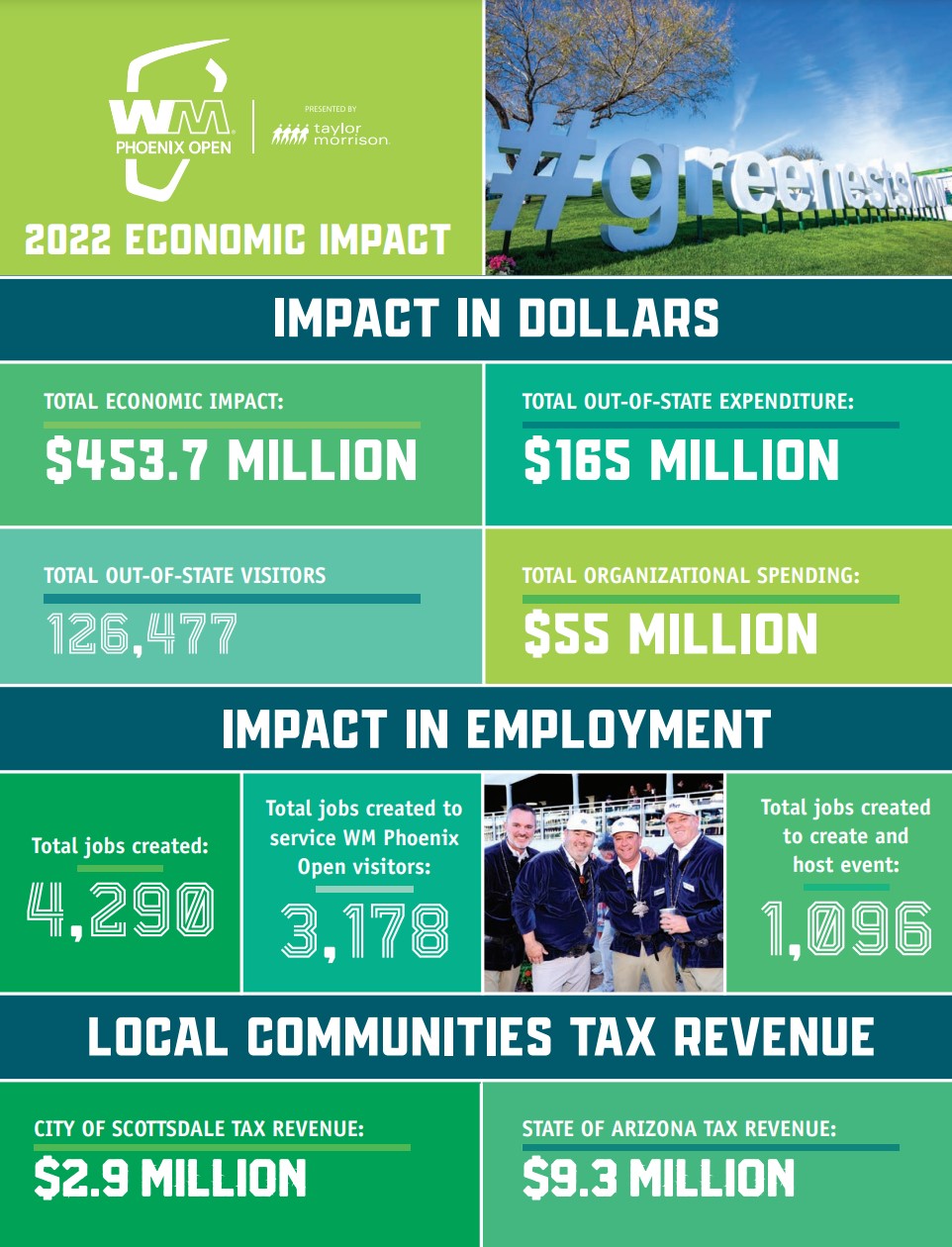An economic impact study conducted by Arizona State University revealed the 2022 WM Phoenix Open Presented by Taylor Morrison resulted in a $453.7 million influx into Arizona’s economy. The study, commissioned by The Thunderbirdsmhosts of the tournament,also reported a GDP contribution of $276.8 million to the state and an annual employment impact of 4,290 jobs.

The study used an IMPLAN model, which is a commercially licensed input-output model developed and maintained by Minnesota IMPLAN Group, Inc. (MIG), to estimate the economic impacts in Arizona. The model is widely used by professional economists to assess the impacts of economic activities on local economies.
“We’re proud to see our once small golf tournament in the middle of the desert grow into a crucial source for economic development and growth not only in the Phoenix area, but everywhere in Arizona,” says Michael Golding, 2022 WM Phoenix Open Tournament chairman and current president of Thunderbirds Charities. “We take great pride in the positive experiences we provide our fans, and together with our corporate partners, we will continue to draw all types of visitors and businesses to the Valley.”
The study defined and estimated economic impact as the increase in spending and therefore economic vitality in a community because of the existence of an event or organization. In terms of the WM Phoenix Open, this accounts for visitors whose main purpose for travel was to attend the tournament, out-of-state media that traveled to cover the event, the “organizational spending” by The Thunderbirds, media and event production companies, diverse organizations and business helping operations, event production and activation sponsors as well as the indirect and induced multiplier effects.
The study honed in on estimating the total gross economic impact (gross output) of the 2022 WM Phoenix Open, including total amount of direct spending by out-of-town visitors and organizations in metro Phoenix, and indirect and induced impacts of those sales. For the study, a visitor was determined to be any individual who does not live in the metro Phoenix area at any time during the year. This allowed no resident expenditure to be included in the economic impact estimates. Dual-state residents were kept out of the study, too.

“The economic impact results reveal the power of professional sports and how a single event can have such a positive impact on a region,” says WM President and CEO Jim Fish. “WM is very proud of what we continue to accomplish together with The Thunderbirds through the WM Phoenix Open for the benefit of the community and the environment. Helping communities thrive and empowering people to live more sustainably is a key priority for WM.”
The PGA Tour, The Thunderbirds and other associates of the tournament accounted for $55.4 million in direct spending from staging and attending the event. This includes the purchasing of tents, equipment, food, beverage, administration, signage, parking, security, hotel rooms for players, caddies, PGA Tour employees, media, and much more.
Visitor and organization expenditures were responsible for over $220 million of economic activity—a massive increase compared to the $195 million in 2017. The total gross output from media, PGA participants and all other organizational spending increased 68.8% from the last study. This number is an additional impact due to the multiplier effect, the spending and re-spending of money in a local economy. The indirect impact combined with direct impact, out-of-town expenditure and total organizational expenditure totals to an economic impact of $453.7 million.
The economic activity due to the tournament also created state and local sales tax revenues. The direct sales tax revenue created from out-of-state visitors, media and PGA participants at the 2022 WM Phoenix Open is an estimated $17.6 million. Direct sales tax revenue is established at $13 million by a combined direct fiscal impact in the City of Scottsdale ($2.9 million), Maricopa County (1.9 million) and the State of Arizona ($9.3 million).
Read more about the study here.
